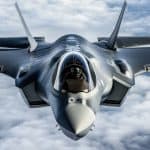In recent years, advancements in aerospace technology have led to the emergence of innovative aircraft design, notably in the field of freight transport. One such groundbreaking development is the robotic aircraft featuring combined wings, which promises to revolutionize the logistics and supply chain industries.
The design of this robotic aircraft significantly deviates from traditional cargo planes. By integrating wing morphing technology with robotics, engineers have crafted an aircraft capable of adapting its wing shape and configuration during flight. This adaptability enhances the aircraft’s aerodynamic efficiency, allowing it to carry heavier loads over longer distances while consuming less fuel. Such innovation could be a game changer for global trade, particularly in an era where sustainability and efficiency are critical.
The combined wing design aids in improving the aircraft’s performance under various flight conditions. By adjusting the wings during ascent, cruise, and descent phases, the aircraft can optimize lift and reduce drag. This not only boosts the aircraft’s range and payload capacity but also decreases its carbon footprint—a vital factor in today’s environmentally-conscious industry.
Additionally, the use of robotic systems in these aircraft allows for more precise maneuvering and operation. Automated controls reduce the need for a large crew, cutting costs related to labor and training. This automation also enables seamless integration into existing logistics networks, as the aircraft can be operated with minimal human oversight. Unmanned operations can also enhance safety, as human error is a leading cause of accidents in aviation.
One concrete example of this transformation can be seen in projects led by aerospace companies like Boeing and Airbus, which are heavily investing in robotic and automated systems for cargo transport. These initiatives focus on developing aircraft that utilize artificial intelligence to enhance flight operations, from takeoff to landing. The goal is to create smart logistics solutions that can respond quickly to changing supply chain demands.
Moreover, the integration of robotic aircraft into freight transport systems could significantly lower operational costs. This is particularly beneficial for e-commerce companies that rely on fast and economical shipping options. As these technologies mature and become more widespread, we can expect to see a dramatic shift in how goods are transported across the globe.
The implications of this new technology extend beyond mere logistics. The efficiency gains achieved through the use of robotic aircraft with combined wings can reduce reliance on traditional freight methods, such as trucking and shipping by sea, which can be slower and more environmentally taxing. As industries strive to meet tighter deadlines while minimizing their ecological impact, this aerial revolution could provide the solution they need.
Looking forward, the field of aerial freight transport is on the cusp of a significant transformation. The introduction of robotic aircraft featuring combined wings could lead to safer, more efficient, and environmentally friendly freight transport solutions. As research and development continue, the potential for these innovations to reshape global logistics is vast, paving the way for a new era of transportation that aligns with the future needs of the planet and its economy.
Innovative Tips and Life Hacks for Efficient Freight Transport
As advancements in aerospace technology continue to reshape the logistics industry, there are several practical tips and interesting facts worth knowing about the emerging robotic aircraft with combined wings. These innovations not only promise to enhance freight transport efficiency but can also inspire forward-thinking strategies for businesses and consumers alike.
1. Embrace Automation: The rise of robotic aircraft highlights the significance of automation in logistics. Businesses can adapt by incorporating automated systems in their operations, such as inventory management and order processing. Leveraging automation can reduce human error and increase efficiency across the supply chain.
2. Optimize Delivery Routes: With the introduction of smart logistics solutions relying on artificial intelligence, companies should consider utilizing AI-powered route optimization tools. This helps in choosing the most efficient routes for shipping, thus reducing fuel consumption and delivery times.
3. Invest in Sustainability: As companies look to reduce their ecological footprint, exploring sustainable packaging and shipping options is paramount. Robotic aircraft engineering focuses on minimizing fuel consumption; businesses can implement green practices to align with this trend, enhancing their reputation and customer appeal.
4. Research and Adapt: Keep an eye on the advancements made by leading aerospace companies like Boeing and Airbus. Understanding these innovations can provide valuable insights into future logistics strategies and inspire businesses to adapt their models accordingly.
5. Foster Collaboration: Innovative freight solutions are becoming increasingly complex. Collaborating with technology firms can help logistics companies design better systems and processes that incorporate robotics and AI, ultimately leading to enhanced operational capabilities.
6. Experiment with Unmanned Deliveries: For those in the e-commerce sector, piloting programs that utilize robotic aircraft for unmanned deliveries could be revolutionary. By testing these new shipping methods, businesses can stay ahead of the curve and directly cater to a consumer base that demands quick and reliable service.
Interesting Fact: Did you know that the adaptability of combined wing technology allows for changes in wing configuration during flight? This capability not only enhances lift but also optimizes the aircraft’s performance in a variety of weather conditions, potentially making air transport significantly more reliable.
Final Thought: As the aerospace industry evolves, it is crucial for all sectors to embrace and adapt to these changes. Exploring the benefits of automation and innovative technologies can lead to more efficient, cost-effective, and environmentally friendly logistics solutions.
For more insights on the future of transportation and logistics, visit Boeing and Airbus.
The article has been updated: 2024-11-05 16:18
Here are some suggested related links:
1. Aviation Week – Industry insights and news about aviation and aerospace technologies, including innovations in cargo transportation.
2. FlightGlobal – A leading source for aviation news, analysis, and data, focusing on advancements in aircraft and freight transport.
3. U.S. Department of Transportation – Government resources and information on transportation policies and regulations regarding freight and aviation.
4. Robotics Business Review – News and analysis on robotics developments, including aerial drones and their applications in various sectors.
5. Proceedings of the National Academy of Sciences – Research articles and studies related to innovations in aviation technology and its applications for logistics.
6. NASA – Information on aerospace research and developments, including advanced aircraft technology and its potential for freight transport.
7. Boeing – Updates and innovations concerning commercial aviation and cargo services by one of the world’s leading aerospace companies.
8. Airbus – Insights on aircraft design, technology, and developments aimed at enhancing freight transport capabilities.
9. Unmanned Airspace – News and analysis focused on unmanned aerial vehicles (UAVs) and their impact on freight and logistics.
10. DHL – Leading logistics company providing insights on trends and innovations in freight transport, including the use of aerial drones.
The article has been updated: 2024-11-06 03:14
What are the key advantages of using robotic aircraft with combined wings for freight transport?
The key advantages of using robotic aircraft with combined wings for freight transport include increased efficiency and versatility in flight operations. The combined wing design allows for improved lift and aerodynamic performance, enabling the aircraft to carry heavier payloads over longer distances. Additionally, these robotic aircraft can operate with reduced environmental impact due to lower fuel consumption and emissions compared to traditional freight planes. Their autonomous capabilities enhance safety and reduce labor costs, making freight transport more streamlined and cost-effective. This innovative technology is poised to revolutionize the logistics industry by enabling faster and more reliable delivery of goods.
















